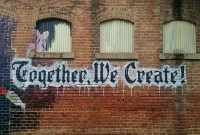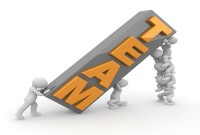- Home
- Business Processes
- Industry Knowledge
- Aerospace Industry
- Automotive Industry
- Banking Domain
- BFSI Industry
- Consumer/ FMCG Industry
- Chemicals Industry
- Engineering & Construction
- Energy Industry
- Education Domain
- Finance Domain
- Hospitality Domain
- Healthcare Industry
- Insurance Domain
- Retail Industry
- Travel and Tourism Domain
- Telecom Industry
- Leadership Skills
- eLearning
- Home
- Leadership Skills
- Decision Making
- Creating Highly Effective Teams
Creating Highly Effective Teams
How do we create effective teams? What comes to mind when you think about an effective team? High performing teams exhibit accountability, purpose, cohesiveness, and collaboration. It is a team that works seamlessly as a whole. Everyone brings unique talents and strengths and support each other to bring out the best in everyone. How do you create one?
Effective teamwork is essential in today’s world. Based on your experience you would have noticed that a team does not become effective from the very onset. For teams to function effectively, they must be created properly. It is really challenging to do things right in the beginning to make sure that you get the level of effectiveness you desire when you're putting together a new team. The task is much easier if you have a plan in place. This article summarizes a practical, step-by-step process for building and maintaining an effective team.
1: Pre-work - Analyze and Plan:
Most managers rush into the work of setting up the team without getting clear agreements in the beginning about where they are going or how they want to get there. Clarifying and understanding your expectations from the new team upfront will help you determine its structure and will set up your team for success.
Do the Pre-work in stage1 itself. Understand the nature of work that needs to be accomplished. Determine if a team is necessary to accomplish the task. Once you have established the need for the team, begin by defining the goal of your team. What is its ultimate purpose that this team must aim for? What are your expectations from the members of the team? How will your team contribute to your organization's goals and mission? What authority the group should have?
Then create a Team Charter to help clarify your team's objectives. Focus on the aspects listed below while creating a charter and clarify each of these aspects of teamwork. Discuss the questions listed and record your agreements. Many of these questions can be answered immediately. Others will need to be answered or modified as you get into the formation stage.
- What is the purpose of this team? Why does it exist? Why is it worth investing in this time and effort?
- What shared values are needed to guide how we approach our work and how we work with each other?
- How does success look like for this team? How will we measure success?
- To whom is the team accountable? How will we track and report progress on commitments and action items?
- What planning and problem-solving process are we going to use? What are the timeframes?
- How will we make decisions? What decisions can be made by subgroups and what decisions need to be made by the whole team?
- What are the deliverables?
- What are the team’s approval matrix and authority? Do any decisions require outside approval? If so, how will approval be obtained?
- How will we organize to accomplish the work? What is the best structure? What roles are needed?
Try to ensure that no tasks or responsibilities overlap unnecessarily between roles, as this could cause problems later on.
2: Onboarding – Getting the Right People on Bus:
Once you've defined your goals, and have identified the roles and the structures, the next step is to identify and make a list of the type of people that you want on your team. Focus on the questions listed below to have a better understanding of the talent and expertise you need for your team:
- Who are the members of the team and what are their primary areas of expertise?
- What strengths should each person have?
- Is any other expertise needed or any technical ability expected?
- Are there any behavior expectations – for example, a positive attitude, emotional intelligence, or a collaborative spirit to the team?
- Are there any other groups or individuals that need to be represented or consulted?
- How the team is financially supported? Do we have the materials and technology needed?
- Are the time demands on team members understood and considered reasonable?
- What information do we need? Do we have access to all the information we need?
- Do our team members need any special training?
Great managers know that talented people are their greatest resource, and the hardest asset to find and keep. The key to build an effective team is to spend an inordinate amount of time on people issues: finding, recruiting, developing, coaching, and providing feedback to them. Start by spending time to ensure that the team consists of all personnel necessary to do the job. The next step is to recruit and establish boundaries by deciding who is and is not in the team. When you bring new people on board, make sure that you recruit effectively and professionally. Analyze your roles and build a recruitment process that ensures the best possible talent to fill these roles.
3: Create Performance Conditions:
During this phase arrive at an agreement regarding the tasks to be performed with your new team members and also take the opportunity to clarify the behaviors expected of each team member. Use your Team Charter to build an understanding of team objectives. Each person should clearly understand the goals of the group and should know how these fit with your organization's overall objectives.
Establish Key Performance Indicators (KPIs) linking your team's tasks to your organization's goal and objectives and use these indicators to start managing performance. Team members should be clear about the definitions of these KPIs and must understand how they affect them directly so that they understand their deliverables and how they will be measured. Provide all the needed materials and equipment to do the job effectively.
4: Build Trust:
As your team begins to work together, allow some time for people to get to know one another, as at this stage you need to establish a way each team member can exchange ideas and build mutual trust. Successful groups are built on trust and collaboration. A free exchange of ideas, in an open environment, will allow your team to get to know each other and enable you to check on how they work together. You might even want to consider conducting team-building exercises to help build team trust and establish personal bonds.
Setting up a series of informal meetings, early on in your project, offers an ideal opportunity for team member exploration. Like other teams, your people will also most likely progress through several predictable stages of team formation and help them bond with each other, as they move from being strangers to form a cohesive team. Use this time to discuss your project, delegate particular tasks, set individual roles, and discuss objectives. Always make sure that everyone involved understands every stage of their involvement.
5: Provide Ongoing Assistance:
A good team will satisfy its internal or external clients, become stronger as a unit as time passes, and foster the learning and growth of its individual members. You may want to conduct an assessment of the training needs of your members to explore whether people need further training, or need specific opportunities to develop their skills. You may refer to the expectations you captured in the team charter and based on your observations chart a developmental plan to help new team members build the skills they need. Many team leaders and organizations limit training to the induction stage but an ongoing training process will help them become more effective.
6: Motivate, Reward, or Provide Feedback:
One of the most important roles that you have as a team manager is that of keeping individuals motivated and energized to keep working for organizational goals. Try to tailor your efforts based on the different needs of each individual (refer to the Situational Leadership Model). Building effective teams is a continuous process – keep revisiting each step of this process on a regular basis.
Related Links
You May Also Like
-
Reasons behind Wastage of Time
Under-utilization of time may be due to the faulty system or faults of manager/officer/leader or due to lack of planning. There could be many factors driving the procrastination behavior like system issues, personal work habits, and lack of delegation, personality traits, and bad working habits of the leader, failure to tackle interpersonal conflicts, obstacles, and lack of far-sightedness.
-
Tips for Effective Time Management
After studying and analyzing how time is spent, why time is wasted, and where time is wasted you need to decide about the changes required for effective utilization of time. For this purpose, a large number of remedial measures can be taken by you. The first and foremost determinant of a planned and purposeful utilization of time is to develop consciousness of the value of time at all levels of the organization. Planning, goal setting, and defining priorities are concerns to addressed immediately.
-
Recognizing Stress & its Sources
As an individual, you almost certainly know what stress feels like. Stressors are events or situations to which people must adjust. Stressors may be physical or psychological in nature. The level of severity of stress is determined not merely by exposure but the intensity, duration, and frequency of stressors. The sources of stress are many. They arise from multiple areas both with the individual and from the environment.
-
Effective Business Communication
Communication is all about getting the message across correctly. To make this happen, you need to have good speaking skills and good writing skills. If you have these skills coupled with good listening skills and interest in reading, you have all the potential to be a good communicator. What things should the leader take into consideration to be more effective with interpersonal communication?
-
Team leadership theory is a recent leadership theory that does not discriminate between the leader and the other team members. The approach considers contributions from each team member to be critical for organizational success. This approach focused on the overall team effectiveness and team problems are diagnosed and action is taken to remediate weakness. This approach provides for taking corrective action when the leader deems necessary.
-
Teams are certainly very relevant and important elements in today’s high-performance organization but the important thing to remember as a leader is that we can’t simply rely on putting highly effective individuals together to make a highly effective team. Empowerment increases the effectiveness of the team and drives many intangible benefits both for the organization and the employees.
-
Appreciative leaders encourage contributions from those around them and facilitate the discussion to mutually solve problems. Understand the concept of Appreciative Leadership and learn about tools to create and ask powerful questions - that lead to new discoveries and possibilities. Instead of focusing on what’s wrong in the workplace, learn about, and build upon what works. Learn in this article the art to apply appreciative inquiry to specific situations and challenges at your workplace.
-
Team Foundation in Forming Stage
This is the first stage of team development. This is the stage when the foundation of the team is laid. During the Forming stage, team members have a high dependence on their leader for guidance. Learn the practical strategies you can use during this stage to help your team develop into a highly effective performing team.
-
In today's innovation-driven economy, understanding how to generate great ideas has become an urgent managerial priority. Managers need to encourage and champion ideas and need to help their organizations incorporate diverse perspectives, which spur creative insights and facilitate creative collaboration by harnessing new technologies. Innovation is the embodiment, combination, and/or synthesis of knowledge in original, relevant, valued new products, processes, or services.
-
Storming Stage of Team Development
Storming is the second stage of team development and this stage is characterized by a bid for power and inter-personal conflicts. Learn the key factors that occur in the storming stage and the strategies that a team leader can adopt to pass this stage of high winds
Explore Our Free Training Articles or
Sign Up to Start With Our eLearning Courses

About Us
Learning
© 2023 TechnoFunc, All Rights Reserved










